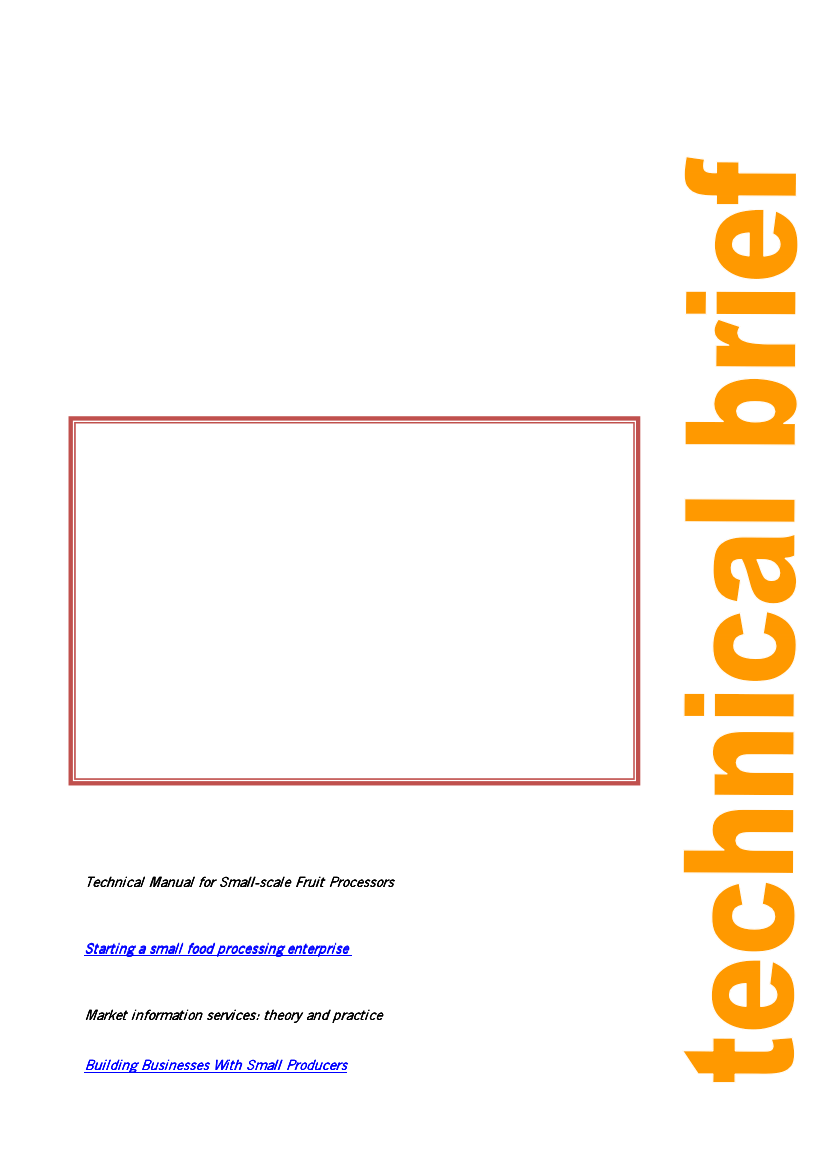
Carrying out a Feasibility Study
Practical Action
Preparation of a business plan
Once the feasibility study has been completed, a business plan can be prepared. The
business plan is a useful tool to help you manage, run and expand the business. It is
essential if you want to borrow money from a bank or building society as they will ask to see
your business plan before offering to lend you money.
Write down the results of the feasibility study. This helps to clarify and focus your ideas and
to make the mistakes on paper rather than during the operation of the business. The
information in the business plan will help you make decisions on the following:
• Whether the business will work successfully
• The demand for the product
• The resources available to produce the product at the right quality and for the
right price
• Whether the business will be profitable
• Whether a loan is needed and if so, how much and when
A well prepared business plan will also help you to get a loan.
How to write a business plan
The results of the feasibility study need to be written down in a simple, concise way to show
bankers or other lending agencies that the business is carefully planned. The different steps are
as follows:
1. Introduction: Summarise what the product is, who the customers are and why the
business is a good idea.
2. Basic information: name and address of the business, the owners, their qualifications
and experience.
3. Information on the product: details of the raw materials, the production process, quality
assurance, packaging etc. What is special about your product?
4. Market: potential customers and where they are located, size and value of the market,
expected market share, likely expansion (or contraction) of the market, number and types
of competitors, their strengths and weaknesses and their expected reactions to a new
product.
5. Selling plan: distribution and sales methods, planned promotion, product cost.
6. Premises/equipment needed: location of the business, building to be used and services
needed, steps taken to meet health and hygiene laws, equipment and its costs.
7. Finance: amount needed for start-up and initial operation, profit and loss statement and
cash-flow forecast for three years, own resources that will be used, size of loan required
and what it is for, security on the loan.
8. Plans for the future: objectives of the business and expectations for the next 3-5 years.
References and sources of information
Technical Manual for Small-scale Fruit Processors. A publication of an ICUC (International
Centre for Under-utilised Crops) project, funded by the Forestry Research Programme (FRP)
of the UK Department for International Development (DFID)
Starting a small food processing enterprise. P Fellows, E Franco and W Rios (1996).
Practical Action Publishing, UK, in association with Technical Centre for Agriculture and
Rural Cooperation (ACP-EU), Netherlands.
Market information services: theory and practice. A Shepherd, 1997. FAO Agricultural
Services Bulletin 125. FAO, Rome, Italy.
Building Businesses With Small Producers S Kapila & D Mead 2002, Practical Action
Publishing
7